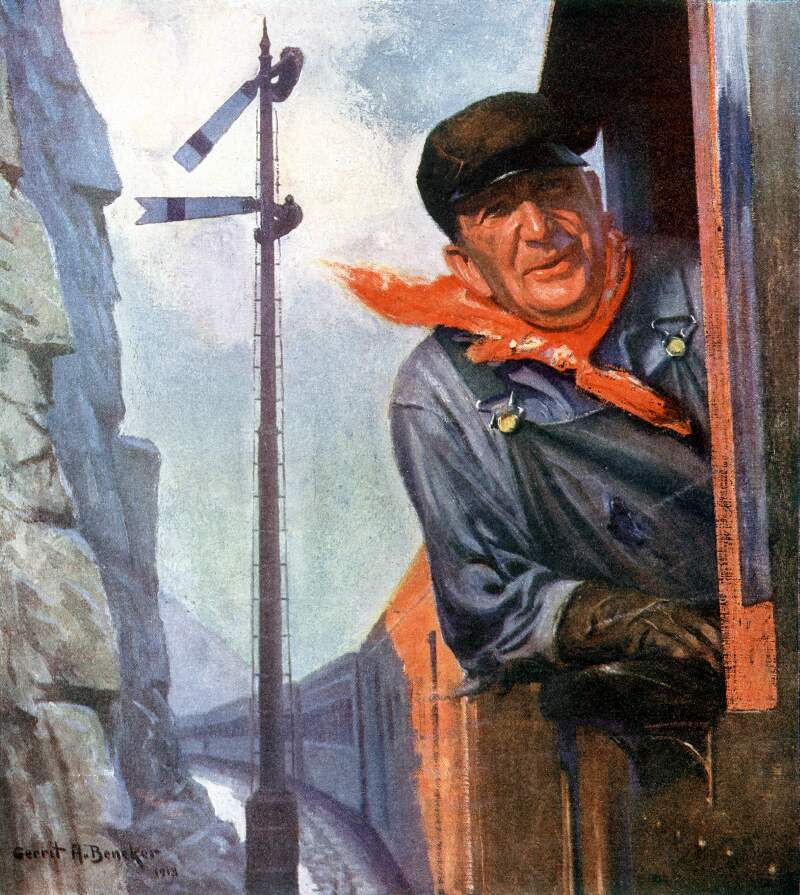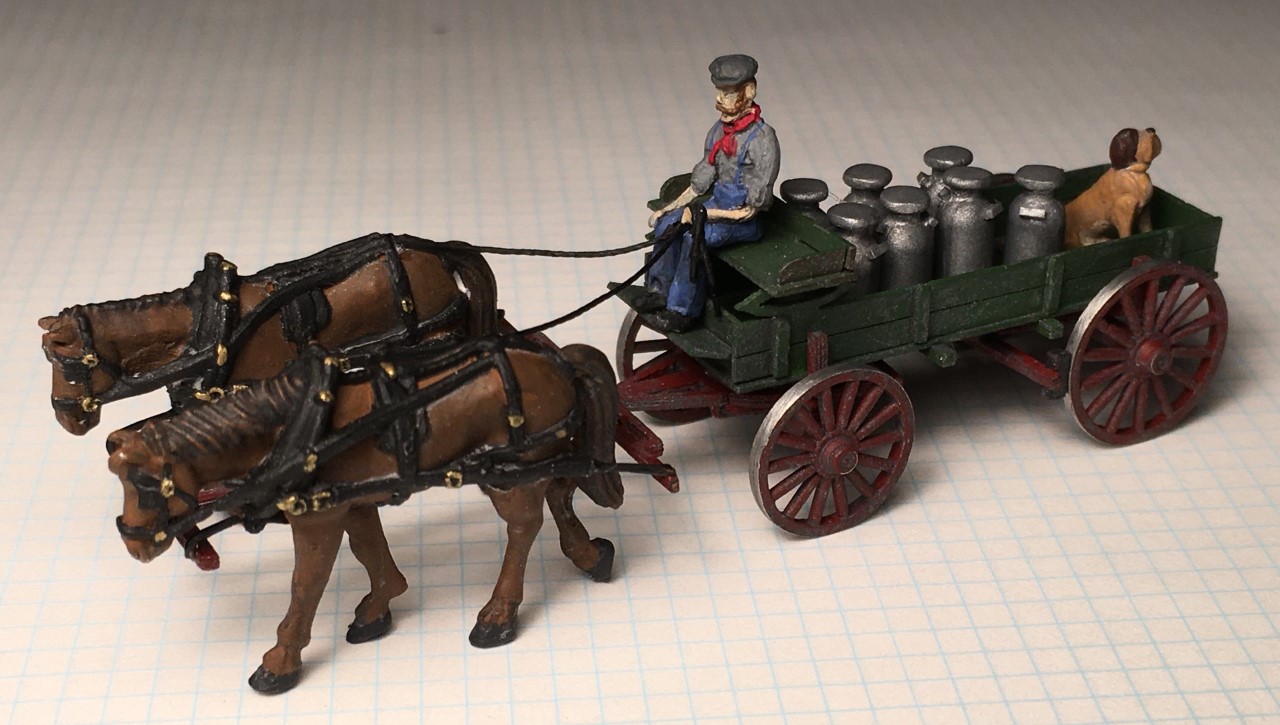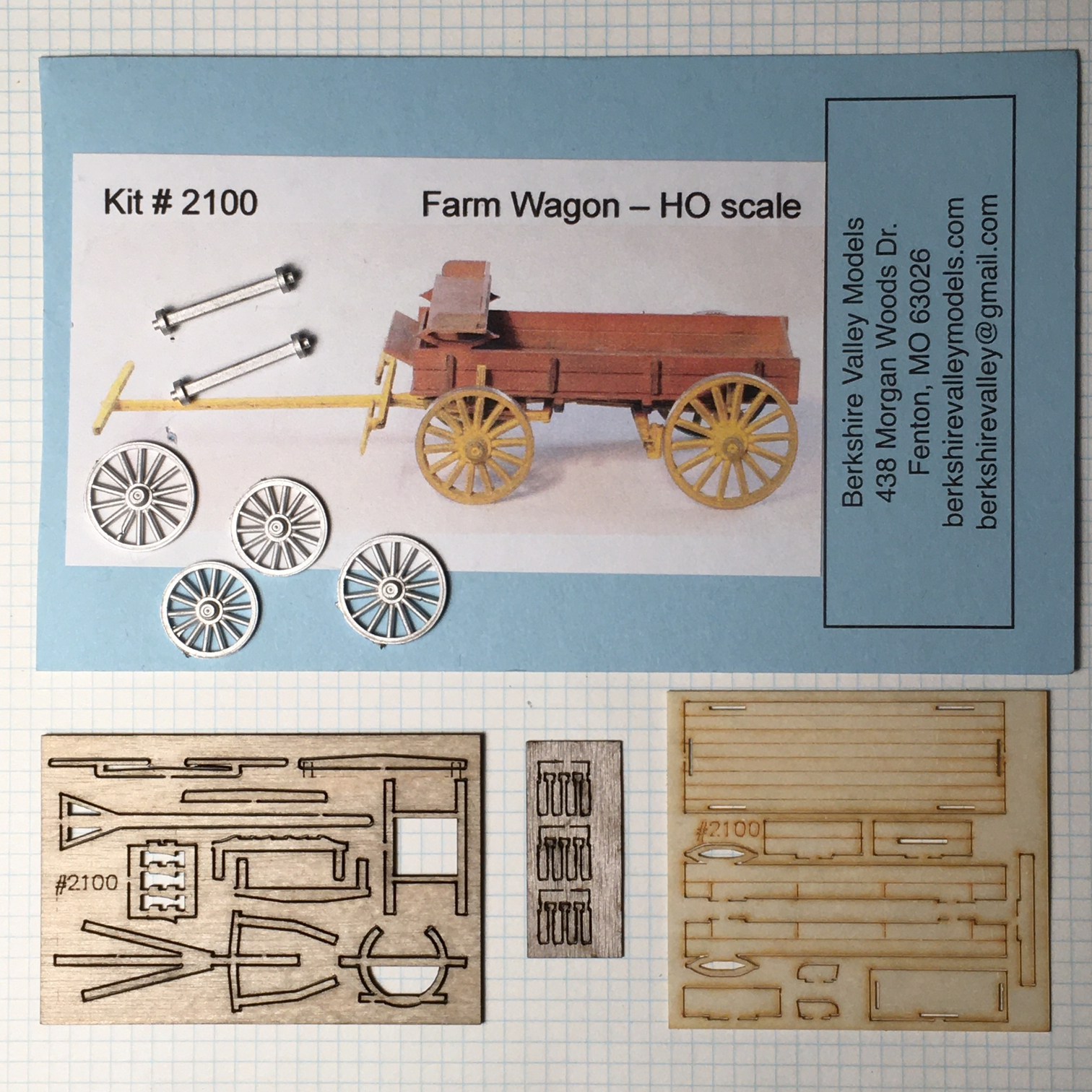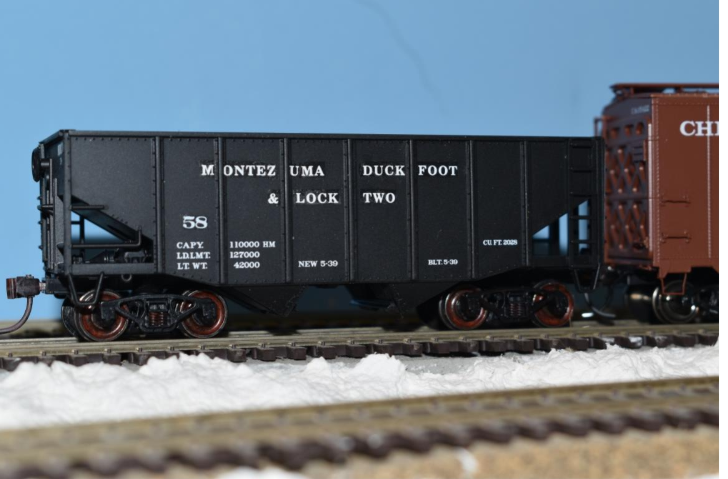Our mission is to promote education and fellowship through the sharing of information and the promotion of the world's greatest hobby. - Model Railroading.
The North Montana Line. Dan Lewis, MMR. N-Scale. Picture taken by me during the 2019 NCR Convention.

Paul Marsden
 Hopefully when this reaches your email box, we will see more signs that life is returning to normal, whatever that turns out to be. This lockdown seems to have lasted forever, but I must say that one upside for me is that I've got a lot more modeling done! I'll share some of that with you later in the Train Order, but for now, I've got important news. This year's regional convention, Black Swamp Junction 2020, was scheduled for us to host on October 15-18. After much deliberation, your convention committee has decided to postpone the event until 2021. The NCR leaders have been most supportive and we are working now to schedule the exact date. This decision was complicated and we took as much time as we could to watch developments around us, but the health crisis plus the economic impact make it too risky to proceed as planned. Hopefully when Fall of 2021 rolls around, we will have solved the virus threat and folks will be recovered enough to travel, gather, and spend money. The convention has been shaping up very well and with another year to prepare, can only get better. We have an outstanding committee and I am proud of the work all of them have done so far.
Hopefully when this reaches your email box, we will see more signs that life is returning to normal, whatever that turns out to be. This lockdown seems to have lasted forever, but I must say that one upside for me is that I've got a lot more modeling done! I'll share some of that with you later in the Train Order, but for now, I've got important news. This year's regional convention, Black Swamp Junction 2020, was scheduled for us to host on October 15-18. After much deliberation, your convention committee has decided to postpone the event until 2021. The NCR leaders have been most supportive and we are working now to schedule the exact date. This decision was complicated and we took as much time as we could to watch developments around us, but the health crisis plus the economic impact make it too risky to proceed as planned. Hopefully when Fall of 2021 rolls around, we will have solved the virus threat and folks will be recovered enough to travel, gather, and spend money. The convention has been shaping up very well and with another year to prepare, can only get better. We have an outstanding committee and I am proud of the work all of them have done so far.
Since we will not have regular meetings until September at the earliest, we need to have some kind of social gathering as soon as conditions allow. For this year's Summer outing, we will probably stay within our area and plan an event that we can control vs. attend a museum or other public facility. Stay tuned as we continue to discuss ideas.
In the last issue of the Train Order, I emphasized that now is more important than ever for us to submit articles and info for Paul to publish. You can see that modeling content has stepped up in this issue and there's no reason why that can't grow from here, UNLESS we don't get materials from you. I try to throw something Paul's way every issue, and my new goal is for my stuff to get squeezed out by YOURS! Please, make my day. Not only how-do articles, but a photo or two, something your are working on, a question, something wanted or for sale. These online pages are our faces and conversations for a while. Let's work together to make the most of the opportunity.
See ya on down the line,
Dave McMullian,
Superintendent
I appogize, April came and went far to quickly for me, and I did not manage to get a Train Order together. This release has extra material in it, and I am hoping you follow up on Dave's appeal and send me some content. Keep us all in the loop as to what you are doing.
It is interesting watching what is going on in the world with COVID-19. If you have not heard, we are not the only convention that has postponed/cancelled over the past couple of weeks. They have had to cancel the NMRA convention for 2022. It was going to be in the UK. They cancelled the event, not directly because of COVID-19, but because other events are been moved/rescheduled , and the host city cannot cope with everything else that is now been planned for 2022. A pity
Thank you Steve Glass for providing 2 good articles for this Train Order, and of course Dave, your contributions are always GREAT. I am finally getting to work on my railway again. For those who did not know, just before COVID-19 took over, my wife and I had just bought a building for her to run a business out of. With the forced delayed opening, we spent a lot of time working at the shop, and worked on things that we was going to put off. Now it is open i am finding I actually have some free time, and I hope to take some pictures, write some things up for future articles.
 On a side note, I know we had a discussion at one of our last meetings, about batteries, and I wanted to share this with you. I always took news about exploding devices, batteries, as just the media blowing things up, but I guess my opinion has now changed. I was going through a drawer, away from all things like heat, sun, etc, that had old devices in it, and discovered this.
On a side note, I know we had a discussion at one of our last meetings, about batteries, and I wanted to share this with you. I always took news about exploding devices, batteries, as just the media blowing things up, but I guess my opinion has now changed. I was going through a drawer, away from all things like heat, sun, etc, that had old devices in it, and discovered this.
Normally we would be having our last meeting about this time before we break for the summer. Instead we are at home and limiting our contact with others. For a model railroader, that can have a positive twist!
Many of us have used this time productively on our modeling, picking up on projects that may have been on the back burner or maybe you started a new project. Everyone wants to hear what those projects are! Instead of keeping these things to yourself or waiting for the next meeting (hoping we can start in the fall per normal) please e-mail a photo and short description to Paul (p.marsden@live.com). You do not need to provide a full description and the project does not have to be finished! Just send a photo from your phone and tell us what it is. Anything beyond that is not required but appreciated. Let's have a "What I Worked On!" in the next issue. By the way, we will try to continue issuing Train Orders for the next few months so please help us out!!
I am going to start with this issue what I have worked on during the shutdown. I was asked by a friend (some time ago) to try and build a replica of the Wheeling and Lake Erie sanding facility in Brewster OH. This is a three-tower facility with a high service walkway. There is not a shake in the box kit for this one, so I am attempting a kit bash. To build the facility, I am using two Walthers sand tower kits plus a Plastruct Service Platform Kit and various other bits of styrene and brass. This project has taken a few months to assemble working in what little spare time I have. I am hopeful to have this completed by the end of June.

So far, I have the concrete pad, and concrete platform assembled and weathered. The middle tower is assembled from the Wathers kit and the outer towers are a combination of 3D printed base, styrene tube and kit bashed upper portions from the Walthers kits. I am currently working on the various railings, fittings and piping to complete the model.

So please follow along and send a picture of what you have worked on! In the meantime, please be safe everybody!
Marshall Stull,
Assistant Superintendent
Given that folks will be self isolating for a while I thought I would share my "suggestions/reviews" of an unusual type of railroad literature that I have been reading over the course of years whenever I find one. Namely tales of Hobos in their own words. I find all of these books interesting reading in that they are great adventures told with a short story feel with doses of insight into human nature, sometimes enlightening, sometimes nonsense.
Tales of the Iron Road: My Life as King of the Hobos by "Steam Train" Murray Graham and Robert J. Hemming.
This is the first of this type of book I read. It tells the stories of Murray Graham from leaving home in Toledo in the 1930's to find work, through train hopping in Europe in WW 2 and taking up hoboing again in the 1960s and 1970s when he found domestic life too dull. This latter period is when Murray earned the moniker "King of the Hobos". This is 3/4 a great book the latter quarter talks about Murray's charity work as King of the Hobos and while commendable not nearly as compelling as having to throw a sexual predator from a speeding train as was the case in an earlier chapter. Copyright 1990, 222 pages.
Rolling Nowhere: Riding the Rails with America's Hobos by Ted Conover.
Mr. Conover's book is the most literary book of the set. Originally conceived as a thesis project but the hazards made him drop out of school to conduct his research. Ted's adventures occur in the late 1970's and are therefore more familiar to a modern reader. The characters that Conover encounters are what makes this book interesting beyond the trains. Individuals friendly and dangerous at the same time, philosophers insightful and silly all lend to the culture of the Hobo that Ted wants to study and be apart of for a while. A subplot of the narrative is how different people are treated by those in authority, governmental, religious, and business, depending on how they look or the context of the encounter. This book isn't heavy reading but is very well written and engaging. Copyright 1981,1984, 2001, 281 pages.
Beggars of Life: A Hobo Autobiography by Jim Tully.
Mr. Tully's book when published was considered crude and crass because of his blunt writing style and the coarse people he comes in contact with as a "road kid" in the 1900's. Jim Tully was an Ohioan who was disenchanted with life as a ditch diggers son and took to riding trains as an adventure and to escape a child labor factory job in a chain factory. The story he tells is of tough people in a difficult life style. This book, and Jack London's, make clear why hobos were discouraged and hated by some railroad men. Railroaders faced damage to equipment, and dangerous encounters with desperate men on an already dangerous job. This book seemed to me the most true to the classical hobo's life, adventurous, dangerous and surrounded by all round shady characters. Original copyright 1924, edition read 2004.
The Road by Jack London's
Yes, that Jack London the writer of Call of the Wild, White Fang, and short stories such as "To build a fire". Mr. London was also a "road kid" with a knack for telling "stories" (elaborate lies) to garner sympathy while begging or to get out of trouble. It did not always work and one chapter describes his 30 days in prison (an adventure in itself). Jack is a good story teller in this small book and his exploits are interesting and compelling. His efforts to "hold down" a train are very entertaining and are worth the price of the book alone. Original copyright 1907, 119 pages
Steve Glass

 Here is a neat project that produces an iconic vehicle suitable for most layouts that won't break the bank, and it was fun to build! The wagon kit and figures were produced by Berkshire Valley Models in Fenton, MO. The parts are laser cut from good quality stocks with clean edges and detail. Assembly went quickly using Elmer's yellow wood glue. It is quite fragile during assembly but once everything is glued up, it's more sturdy. I do not recommend scoring the inside walls of the wagon to simulate boards like the outside because they are too thin and prone to split. Don't ask me how I know this. The wheels were very clean castings and with crisp detail. Once I had the body and chassis assemblies done, I painted them contrasting colors using Ceramcoat craft paints. When dry I hit the wheel treads with fine sandpaper which produced a nice freshly-worn shine.
Here is a neat project that produces an iconic vehicle suitable for most layouts that won't break the bank, and it was fun to build! The wagon kit and figures were produced by Berkshire Valley Models in Fenton, MO. The parts are laser cut from good quality stocks with clean edges and detail. Assembly went quickly using Elmer's yellow wood glue. It is quite fragile during assembly but once everything is glued up, it's more sturdy. I do not recommend scoring the inside walls of the wagon to simulate boards like the outside because they are too thin and prone to split. Don't ask me how I know this. The wheels were very clean castings and with crisp detail. Once I had the body and chassis assemblies done, I painted them contrasting colors using Ceramcoat craft paints. When dry I hit the wheel treads with fine sandpaper which produced a nice freshly-worn shine.
The horses and driver are cast metal and again required very little cleanup before painting with Ceramcoat. I used Nutmeg Brown for the horses followed by black for the harness gear and gold for hardware and buckles. For a while I was stumped trying to figure out how to attach the horses to the wagon realistically. Finally, I drilled into the back of the harnesses on the horses' sides and attached pieces of .020 wire. I did the same to the harness on each horse's chest. All three wires were bent down at their tips and glued to the draw bars on the wagon. It's delicate, but it looks right and you can move it around. The reins are lengths of fine smooth thread that come off the horses' backs, loop over the driver's hands and hang down his leg.
Once everything was done, I airbrushed with a 50-50 mix of Dullcoat and lacquer thinner, then weathered with a black ceramic glaze. The milk cans are from Tichy and are nicely molded, but I don't think they look right without handles. I cut bits of .020 square styrene and glued them on for a quick fix, then painted them with Stainless Steel Poly S. The St. Bernard is from Woodland Scenics and I just did some touch-up painting on him.
All in all, I think these are excellent products and very reasonable at $12.95 for the wagon kit, $4 for the horse pair, and $2 for the driver. BV has five other wagon styles and 4 other drivers as well, plus quite a few HO and O scale structure kits, vehicle kits, and details. Service was fast and courteous.
Dave McMullian,
Superintendent

This is one of my spring/ social distancing projects; a two bay 55ton fishbelly hopper for the home road short line Montezuma, Duck Foot and Lock Two Railroad. This model started as a Bowser model painted black with just data, the railroad lettering is 20 to 25 years old from Railgraphics.
I am sure some are thinking why Montezuma, Duck Foot and Lock Two Railroad? I worked for the St, Marys Hobby Center in St. Marys, Ohio while in High School. We set up sale tables at various shows and while driving to one of these shows the proprietor, Larry Kramer and I were discussing the narrow gauge railroads of west central Ohio and were amused with the names of these railroads. They were either between nowhere and a significant somewhere, or between nowhere and nowhere. So Larry mused that a perfectly reasonable name would be Montezuma, Duck Foot and Lock Two Railroad referring to some tiny communities in west central Ohio. I thought this was a great name so I've remembered and used it ever sense, though sparingly as I enjoy modeling real railroads as well. So if you have a detailed map of west central Ohio, southern Auglaize and Mercer counties, you can readily find Montezuma on the south west side of Grand Lake St Marys, Lock Two is small community in Auglaize county at Lock Two of the Miami and Erie Canal and on a very detailed map you can find Duck foot landing is also on Grand Lake St. Marys towards the middle of the south bank.
I place my railroad wherever I want, presently a West Virginia coal and timber road, and it still amuses me.
Steve Glass
I don't care how much track I lay, I hate fooling with rail joiners. I use Micro Engineering track, which I think is terrific, but their rail joiner are so tight! Not only are they tedious, but you can get hurt shoving sharp objects around your pinkies. Here is a tool I made that solves my problems. I used a scrap of rail (mine is code 83) about two inches long and bent it into a shallow angle near the middle. On one end, file off all sharp corners and bevel each flange. Then attach a 3/8" length of brass tubing over the rail by soldering only at the "top" end. Position the tube so that the rail extends about 1/2 the length of a rail joiner. I used 1/8" OD tubing but that will vary depending on what rail weight you use. Do not use real thin tubing or else you won't have enough surface to push against rail joiners. I use a drill holder as a handle. Simply slip a rail joiner onto the tool up against the tube and shove into place on the track rails. You can play around with the bend in the tool to get a comfortable working angle. This was easy, cost-free, and provides significant reduction in the use of bad words.
Dave McMullian,
Superintendent